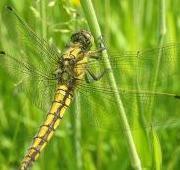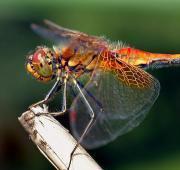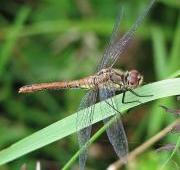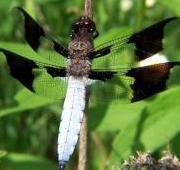 The dragonfly is large predatory insect generally found around watery areas in both the North and South Hemispheres. The dragonfly is very similar to a damselfly but the wings on the adults are considerably different.
The dragonfly is large predatory insect generally found around watery areas in both the North and South Hemispheres. The dragonfly is very similar to a damselfly but the wings on the adults are considerably different. The dragonfly is found hovering near lakes and swamps as the dragonfly larvae (the nymph/baby) is aquatic. The dragonfly nymph is capable of producing a painful bite for humans, where the adult dragonfly poses no threat.
The dragonfly is found hovering near lakes and swamps as the dragonfly larvae (the nymph/baby) is aquatic. The dragonfly nymph is capable of producing a painful bite for humans, where the adult dragonfly poses no threat.


Both the dragonfly and it's larvae are carnivorous animals and they feed exclusively on other small animals. The main prey of the dragonfly are mosquitoes, flies, bees and other small invertebrates. The dragonfly larvae feeds mainly on aquatic insects and their eggs.
The dragonfly is preyed upon by a number of predators around the world including birds, fish and reptiles such as lizards. The dragonfly is also commonly eaten by amphibians such as toads, frogs and large newts.
Female dragonflies lay their eggs in or near water, often on floating or emergent plants. The dragonfly eggs then hatch into nymphs. which is how most of the dragonfly's life is spent. The dragonfly nymphs live beneath the water's surface, using extendible jaws to catch other invertebrates or even vertebrates such as tadpoles and fish.
The larval stage of large dragonflies may last as long as five years. In smaller species, this stage may last between two months and three years. When the larva is ready to metamorphose into an adult, it climbs up a reed or other emergent plant. Exposure to air causes the larva to begin breathing. The skin splits at a weak spot behind the head and the adult dragonfly crawls out of its old larval skin, pumps up its wings, and flies off to feed on midges and flies.

